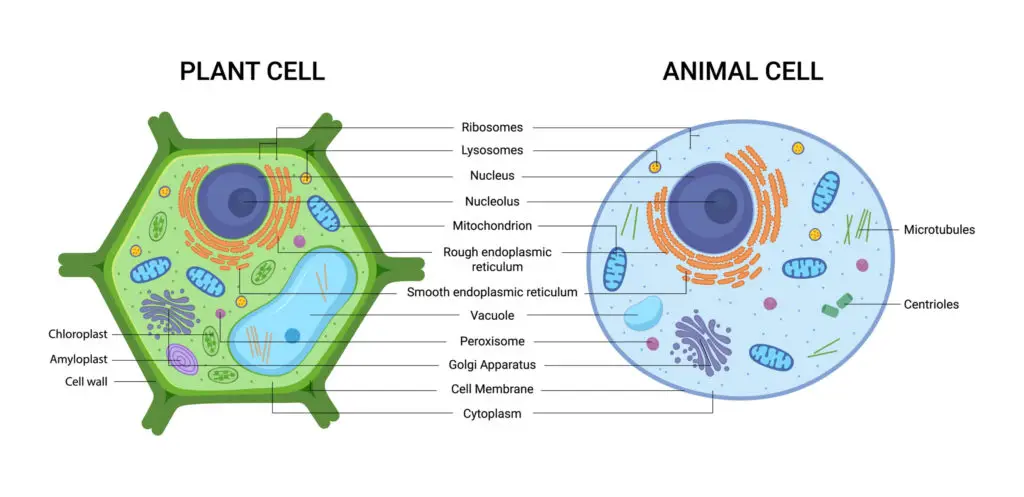Cells
What are Cells?
Cells are the basic building blocks of life, forming the structure of all living organisms. Every cell is essential because it carries out the vital processes that keep life going. For example, they produce energy that fuels the body, and they also reproduce to replace old or damaged cells. Together, these functions ensure that each organism can grow, repair itself, and continue living.
What are the Main Components?
The main components of a cell include:
- Cell Membrane: This is the outer layer that surrounds and protects the it’s contents. It acts as a barrier to keep harmful substances out while allowing essential materials in. For example, the membrane carefully controls what goes in and out, letting in nutrients that are needed and allowing waste products to exit. In this way, the cell membrane maintains a safe and balanced environment for the cell.
- Nucleus: The command center that houses DNA, containing all the genetic instructions necessary for the cell’s activities. It directs processes like growth, reproduction, and protein synthesis.
- Cytoplasm: A jelly-like substance filling the inside of the cell, where all the organelles are suspended and can move freely. The cytoplasm provides a medium for chemical reactions and supports cellular functions.
- Mitochondria: Known as the “powerhouse” of the cell, this organelle produces energy by converting nutrients into ATP. This energy powers all the cell’s essential functions and activities.
- Ribosomes: Tiny structures that synthesize proteins by following genetic instructions from the nucleus. They can be found in the cytoplasm or attached to the rough endoplasmic reticulum.
- Endoplasmic Reticulum (ER): A network of channels that helps produce and transport proteins (in the rough ER) and lipids (in the smooth ER) throughout the cell, playing a role in metabolism and chemical detoxification.
- Golgi Apparatus: The packaging center, which modifies, sorts, and ships proteins and lipids received from the ER to their final destinations within or outside the cell.
- Lysosomes: Organelles containing digestive enzymes that break down waste materials, old cell parts, and foreign particles. They help keep the cell clean and efficient by recycling cellular components.
- Vacuoles: Storage sacs that hold water, nutrients, and waste, especially large in plants. They help maintain the shape and store materials until the cell needs them.
- Cytoskeleton: A network of protein fibers that provides structure and support, helping maintain the shape and aiding in movement and transport within the cell.
These key components work together to support growth, energy production, storage, and waste management, helping the cell function smoothly.
Related Videos
Related Links
What is a Cell? Understanding Life’s Building Blocks
Discover the basics of cells, the fundamental units of life, and learn about their structures, functions, and importance in all living organisms.
